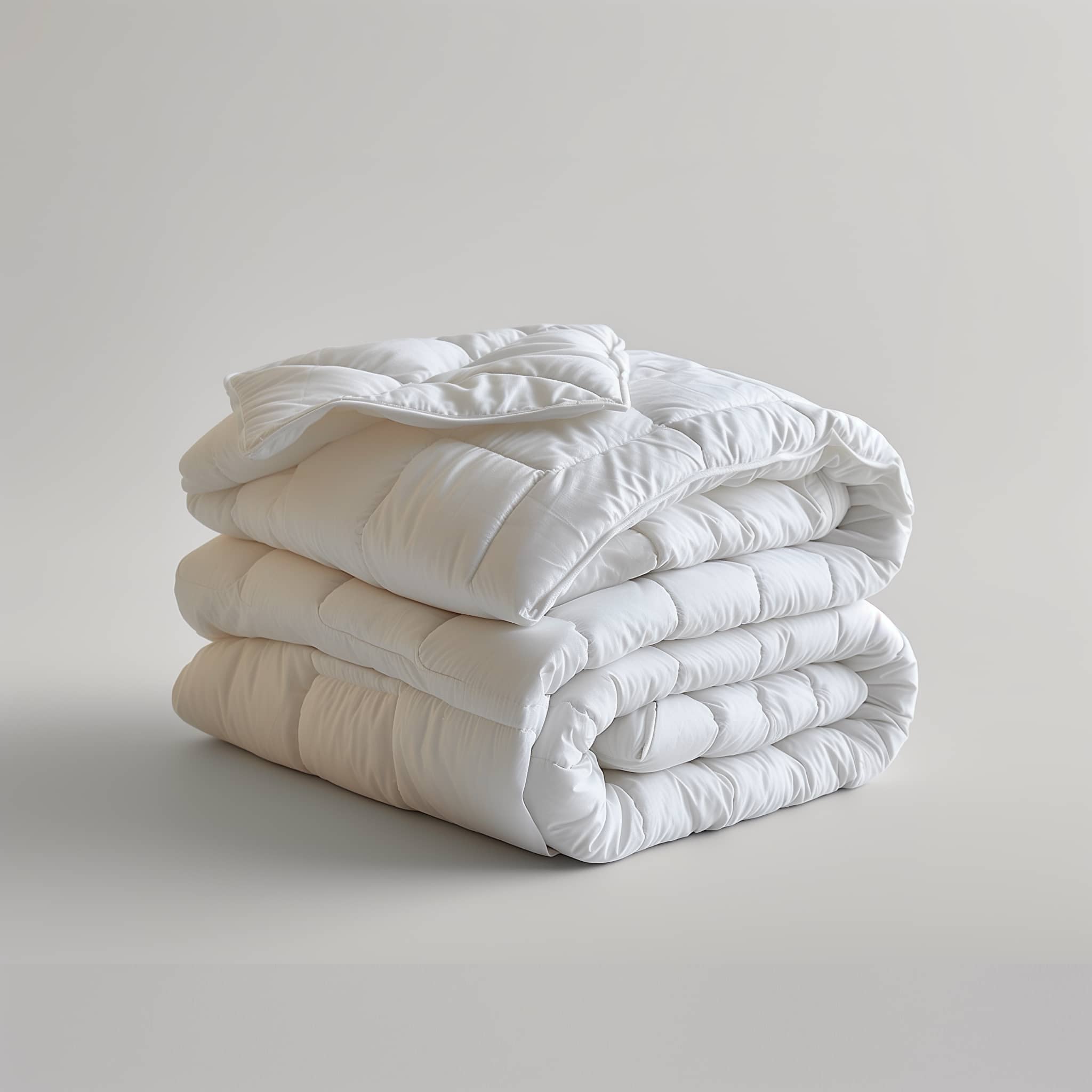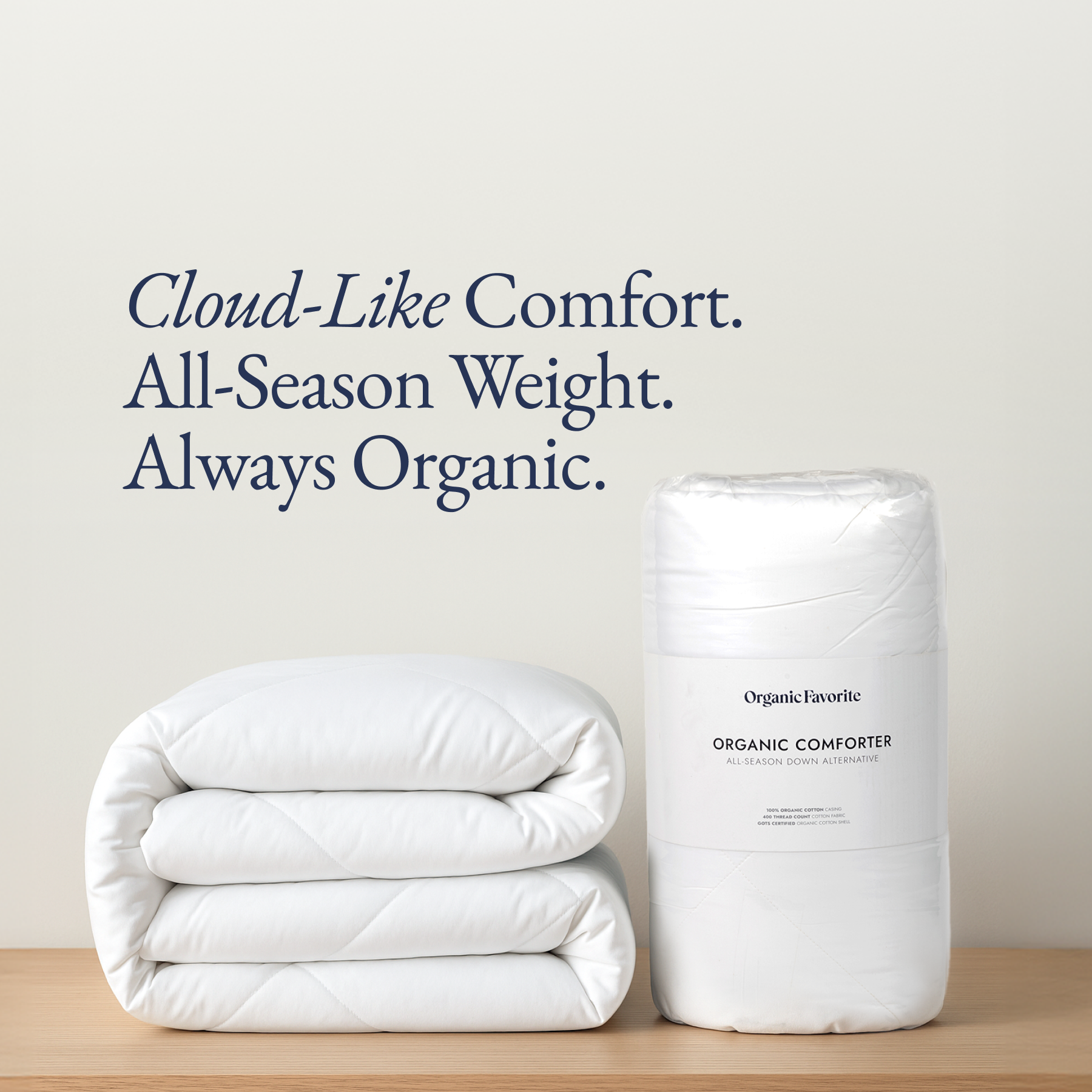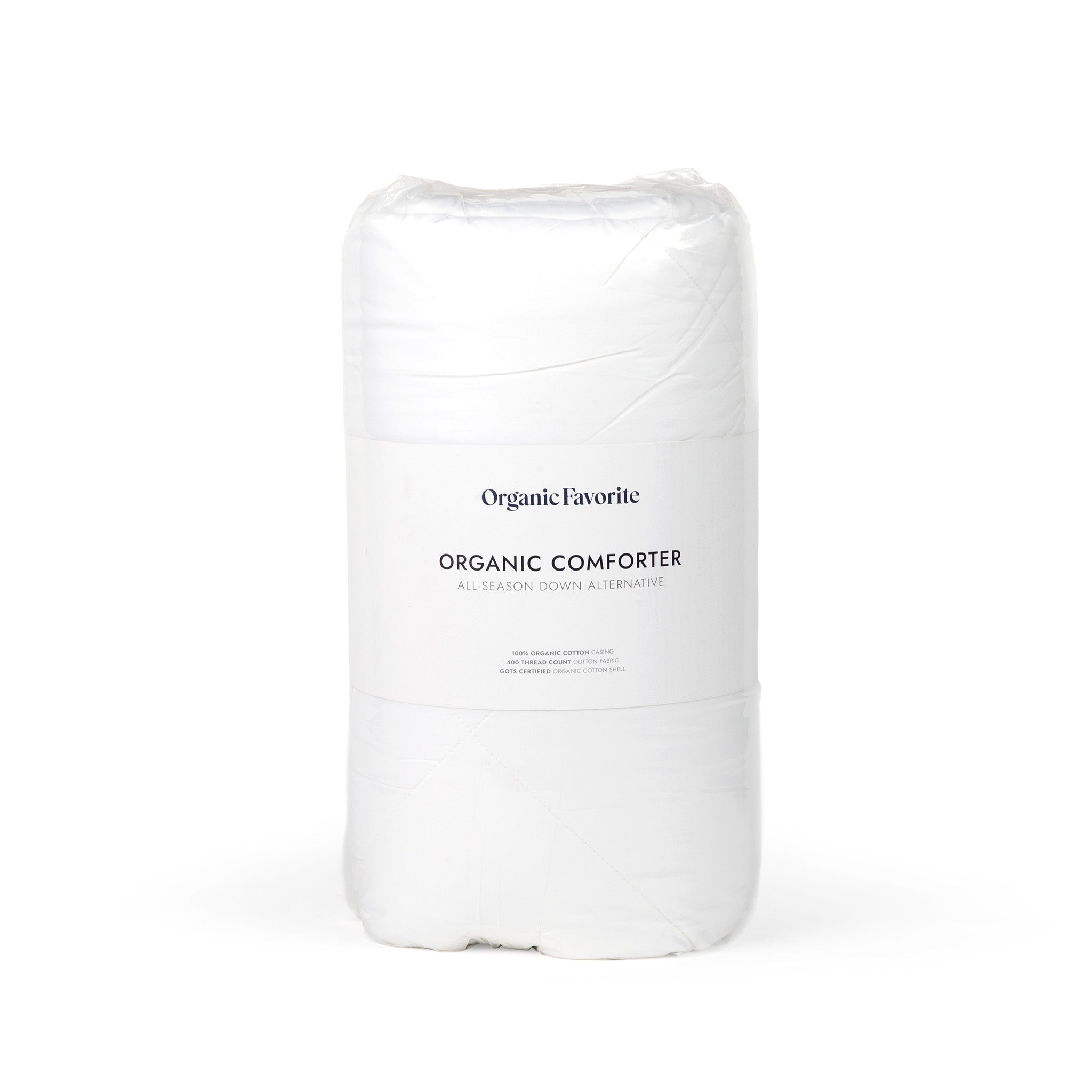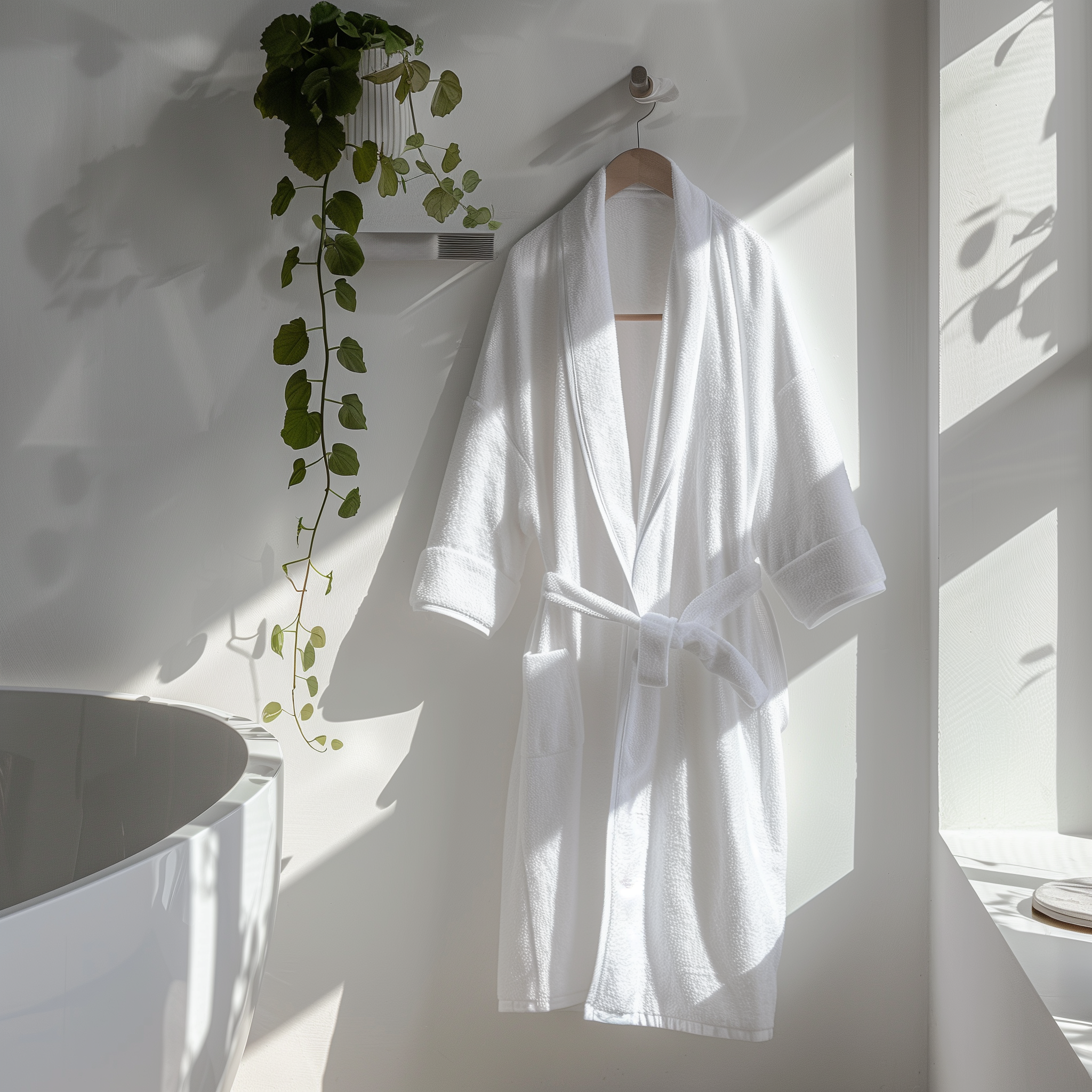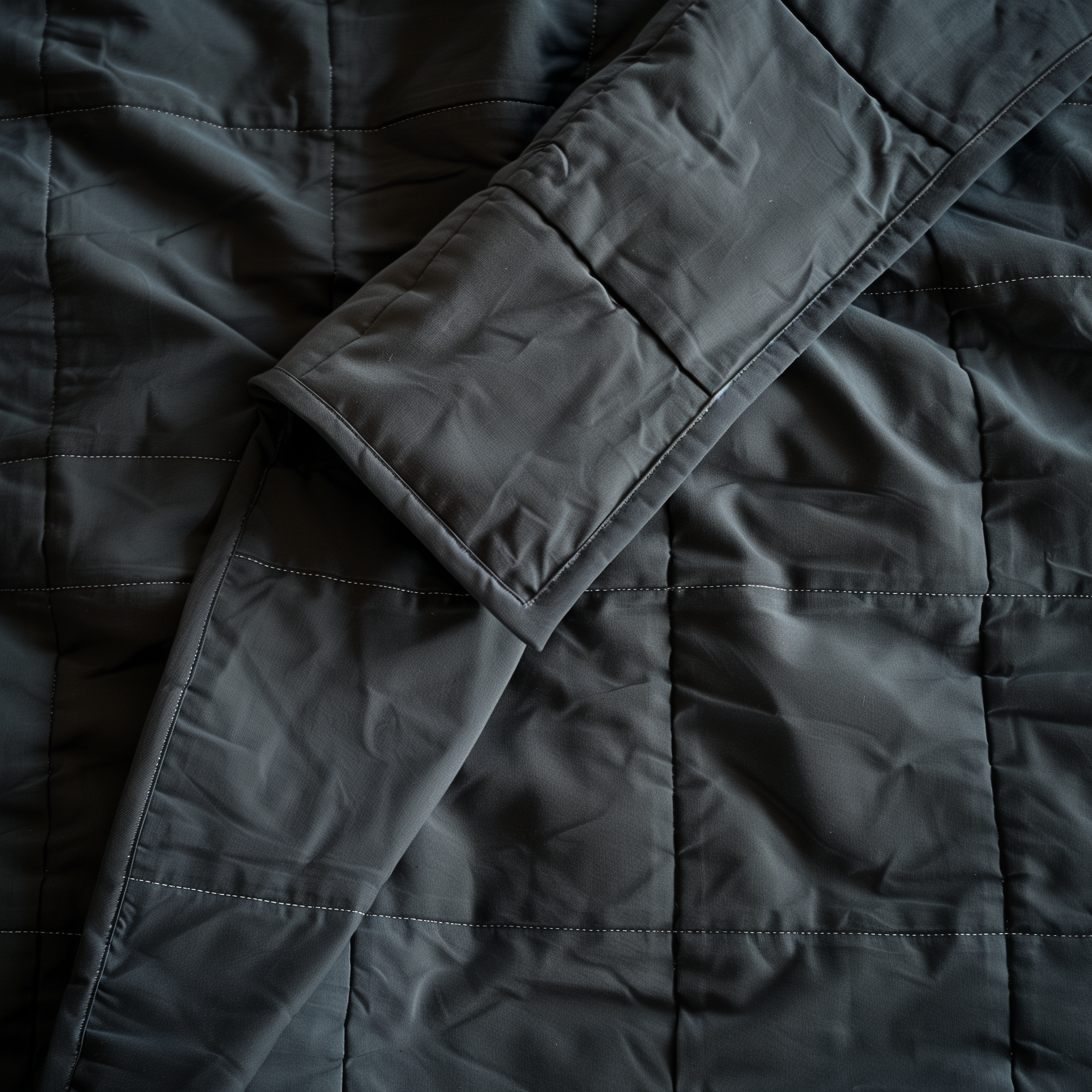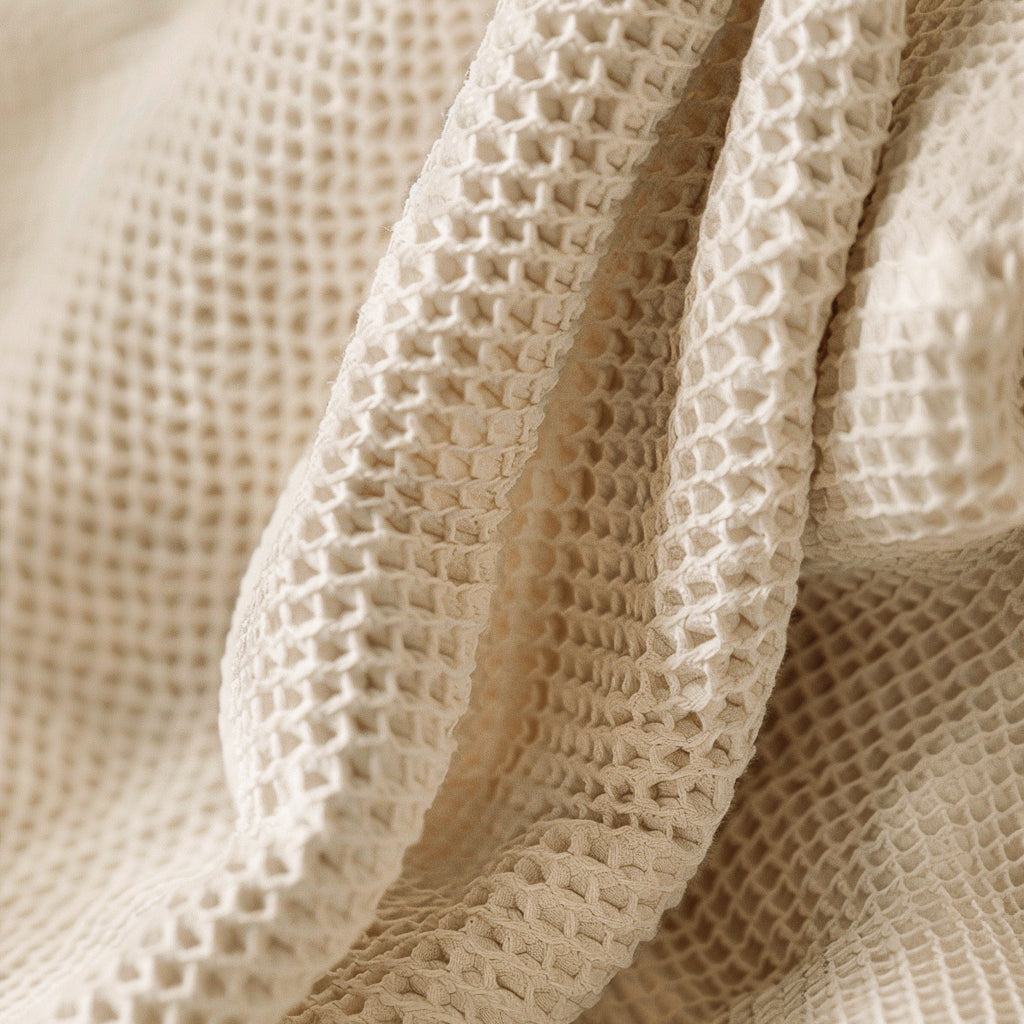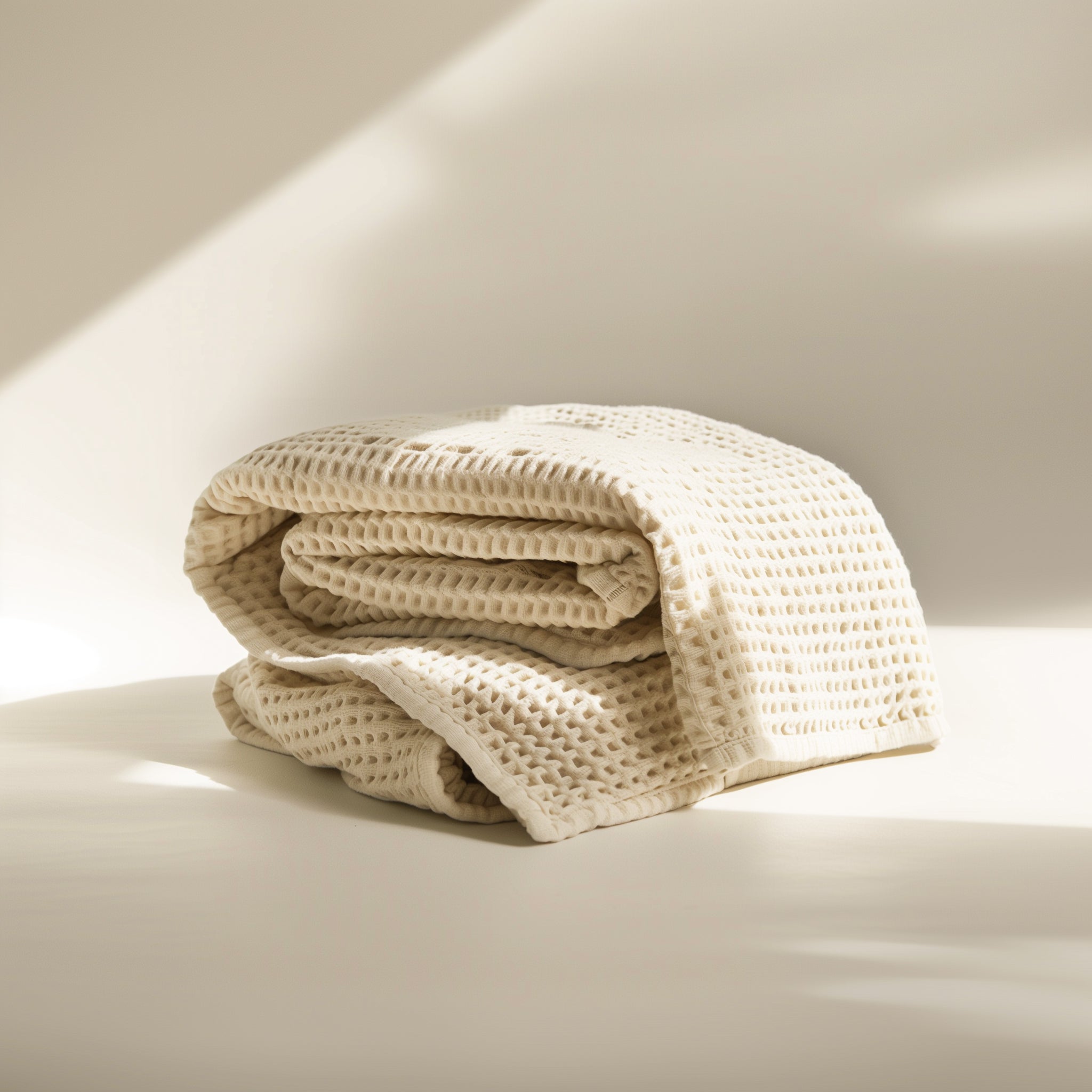When we learned about conventional cotton's impact on farmer health and ecosystems, we knew we had to make a change. That's why we decided it was time to make the switch to organic bedding ourselves. And you know what? There's something so comforting about knowing our comforter is free from harmful chemicals and grown responsibly. Not to mention, it just feels softer and more luxurious against our skin
If you're wondering whether investing in an organic cotton comforter is really worth it, or feeling overwhelmed by all the certifications out there, we're here to guide you. In this in-depth guide, we'll break down the key benefits of organic cotton, explain what to look for in a quality comforter construction, and share easy tips for caring for your new eco-friendly bedding.
Why Choose Organic Cotton?
Maybe you've heard how organic is better for the environment, but let's look at why it really matters for bedding in particular. Unlike conventional cotton, organic cotton is grown without GMOs, toxic synthetic pesticides, or fertilizers. According to research from the Textile Exchange's 2017 Organic Cotton Market Report, organic farming methods actually:
- Use 88% less water per metric ton of cotton fiber
- Emit 46% less greenhouse gases
- Increase biodiversity and resilience against climate impacts
But organic is just as much about protecting people as it is about preserving ecosystems. The same report found that 94% of organic farmers studied had higher incomes and were able to provide better educational and medical resources for their families.
So while organic certifications and labels can feel overwhelming at first, they're worth paying attention to. The Global Organic Textile Standard (GOTS) and OEKO-TEX® Standard 100 are considered the gold standards—ensuring organic farming practices, safe dyes, and ethical manufacturing.
Essentially, an organic cotton comforter isn't just cozy and breathable—it's an investment in your health, farmer livelihoods, and a cleaner future. I know that's powerful motivation for me and many others seeking low-impact, ethical products.
Now that you understand why organic cotton matters, let's dive into what sets certain organic comforter constructions apart in terms of quality and performance.
Organic Cotton Comforter Construction
We know you want a comforter that not only looks gorgeous, but also lasts through years of regular use and washing. Here's what to look for in an exceptionally well-made organic cotton comforter that will stay cozy for the long haul:
The Outer Shell: Most quality organic cotton comforters use a sateen weave for the outer shell fabric. Sateen offers a soft, luminous finish and superior durability compared to lower thread count options. Thread counts around 300-400 keep the fabric light and breathable while preventing premature wear.
The Batting Layer: Sandwiched between the outer shell, you'll find a plush batting layer that provides both insulation and loft. Less expensive comforters use thin batting that starts to clump or go flat over time. Premium picks opt for evenly distributed, higher-density batting for long-lasting resilience and warmth.
The Inner Shell: Underneath that batting is a lightweight inner shell. Durable, tightly-woven organic cotton works well here to help secure the batting evenly and prevent shifting.
The Comforter Filling: Traditional down fillings are warm but require cautious laundering. Many high-quality organic cotton comforters actually use a premium synthetic down alternative. These fibers mimic the loft and temperature regulation of down clusters, but resist clumping, maintain insulation properties when wet, and offer easy machine washing.
Fill Power: You'll often see fill power ratings listed on organic comforter product descriptions—the higher the number, the warmer and loftier the fill. 550-650 fill power is considered a safe "year-round warmth" range for most climates.
So there you have it—key features like sateen outer shells, generous batting layers, and premium filling make for a plush, evenly-insulating organic cotton comforter that will last. It's about quality construction and materials that consider long-term comfort and performance.
For example, at organic favorite, our signature organic comforter joins a 400 thread count organic cotton sateen shell with a premium synthetic down filling. The combination is GOTS and OEKO-TEX® certified, hypoallergenic, and both cozy and practical.
Comforter Care and Maintenance
I know, laundering a giant, luxurious comforter sounds like a hassle. But keeping your organic bedding fresh should absolutely be part of your self-care routine.
Here are some straightforward tips for extending the life of your comforter:
Washing: Most organic cotton comforters are machine washable (unlike down comforters). For best results, use a mild liquid detergent, and wash on the gentle cycle with cold water. Hot water can cause shrinkage and fade colors over time, while powdered detergents may leave residue trapped in the filling.
Drying: Comforters can take multiple dryer cycles to fully dry on a low heat setting. Look for a delicate or air-dry option on your dryer, or use the bulky/heavy items cycle if available. Tossing in a couple clean tennis balls helps refluff the filling. Never put a wet comforter in the dryer on high heat!
Alternative Drying: If an entire dryer cycle still leaves your comforter damp, hang it over a clothesline or lay flat under a fan. Let air-dry fully before remaking the bed. Many avoid the dryer altogether to maximize fresh air exposure.
Fluffing: Once your comforter is fully dry, give it a few firm shakes or "hugs" to help redistribute the filling. Smooth and spread evenly across the bed before making.
Storage: During warm months, properly store your comforter in a breathable cotton bag or enclosed shelf to keep dust and critters out. Avoid plastic bins which can trap moisture and odor.
The main things to avoid? Bleach (damages fibers), fabric softener or dryer sheets (clogs batting), and high heat (breaks down materials).
With some basic care, that $200-$500 investment in an organic cotton comforter can bring you a decade of non-toxic coziness.
Speaking of long-lasting comfort, let's talk about finding the perfect fit and fill warmth to suit your personal sleeping needs.
Finding the Perfect Fit and Fill
As you've likely discovered shopping for comforters, they come in all sorts of sizes and warmth levels. So how do you know which organic cotton option is right for you? Here are some quick guidelines:
Comforter Sizing: Look for your standard mattress size, but with around 12-16 inches of overhang on all sides. So for a king bed, you'll want a king-size comforter around 90-94" wide and 102-110" long. This lets the comforter drape properly over mattress edges while leaving enough tuck-under weight to stay in place.
Climate-Based Fill Weight: Comforter fills are generally measured in grams per square meter (GSM). More filling = more insulation. A good year-round weight in most climates is around 400 GSM. Hot climates may opt for 100-275 GSM, while frigid winters can go 700+ GSM.
Fill Power: As mentioned earlier, higher fill power numbers mean superior loft and warmth retention. Look for 550-650 fill power as a versatile all-seasons option in moderate temps.
Down vs Alternative Fill: If you're not picky about real down and want easy wash and care, consider a premium down alternative filling like our organic comforter uses. For the coziest, hotel-quality warmth and fluffiness, real down or a blend may be ideal.
The key is tailoring your choice to your personal needs and local climate—a too-warm or too-light comforter is a one-way ticket to sleepless nights. I find aiming for slightly warm is wise in cooler regions like ours, as you can always adjust layers if needed.
Ensuring your bedroom space feels like a toxin-free, ultra-relaxing retreat is just as important as finding the perfect organic comforter. Here's how to complete that soothing organic living vibe.
The organic favorite Difference
As a family-owned brand, we're on a mission to make the transition to organic living feel simple, affordable, and deeply rewarding. From our responsibly-sourced GOTS & OEKO-TEX® certified materials to fair-labor, low-impact manufacturing, you can rest easy knowing your purchase has a positive impact.
We walked our own journey toward healthier living, learning how conventional agriculture can take a heavy toll on farmer welfare and local ecosystems. It's what motivated us to create this brand—making certified organic cotton products accessible, while empowering ethical growers who practice regenerative methods.
Our premium organic cotton bedding exemplifies that commitment. But beyond providing quality, thoughtfully-made goods, we also aim to educate and inspire our customers. We share insights and advice for cleaner lifestyles through our blog and are always here to guide you on your wellness path.
After all, each organic purchase is a powerful vote—for cleaner air and water, vibrant soils, and thriving rural communities. It's a celebration of what's possible when we align consumer demand with ethical supply chains that respect people and planet.

